#charles' first trooping as king
Explore tagged Tumblr posts
Text












HAPPY 10TH BIRTHDAY TO THE LITTLE QUEEN HRH PRINCESS CHARLOTTE ELIZABETH DIANA OF WALES ♡
Princess Charlotte was born on 2 May 2015 at St Mary's Hospital, to William and Catherine, the then Duke and Duchess of Cambridge. She arrived during Queen Elizabeth II’s reign as the couple's second child and only daughter. Her full name - Charlotte Elizabeth Diana honours her grandfather Charles, great-grandmother the Queen, her mum Catherine, Aunt Pippa and her two grandmothers Carole & Diana. Charlotte spent her early years at Anmer Hall before moving to Kensington Palace in London with her family, where she started school at Willcocks Nursery and then at Thomas’s School in Battersea. After the family’s 2022 move to Adelaide Cottage, she joined Lambrook School with her brothers. Following her grandfather’s accession Lottie became HRH Princess Charlotte of Wales. She’s third in line to the throne and is the first British princess to not be outranked by a brother in the line of succession. Since her debut at Trooping the Colour in 2016, Charlotte joined her family at various official events and royal tours to Canada, Germany, and Poland, and has taken part in two royal weddings, the Platinum Jubilee in 2022, and King Charles’s coronation in 2023. Lottie loves rugby, tennis, gymnastics, and dance (especially ballet and tap). She’s also a budding performer and has a love for pizza and olives. She is a great goalkeeper and her football skills even got a royal shoutout from her dad when meeting the Lionesses, her favorite team.
#happy birthday lottie 🩷#charlotte's 10th birthday#wales family's 2025 birthdays#lottie wales.#princess charlotte of wales#princess charlotte#2052025#brf#british royal family#british royalty#british royals#royalty#royal#royals#royal family#princess of wales#the princess of wales#prince of wales#the prince of wales#prince george#prince louis#king charles lll#princess catherine#prince william#royaltyedit#royalty edit#royaltygifs#royalty gifs#royalty gif#my gifs
156 notes
·
View notes
Text

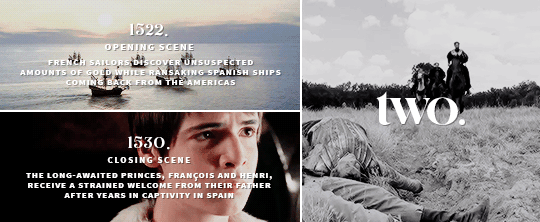

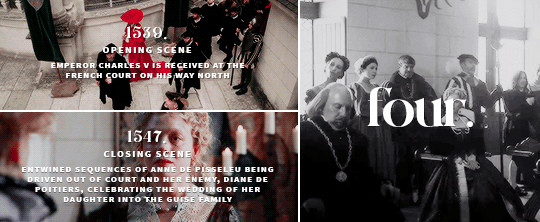
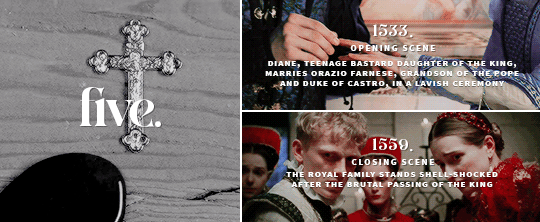
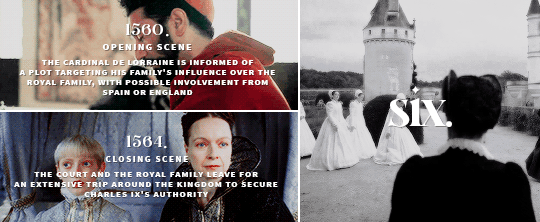

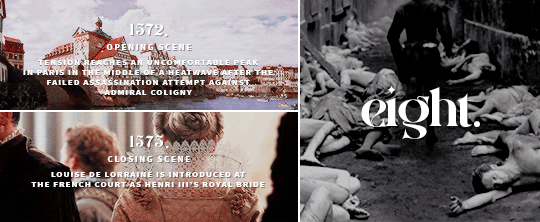
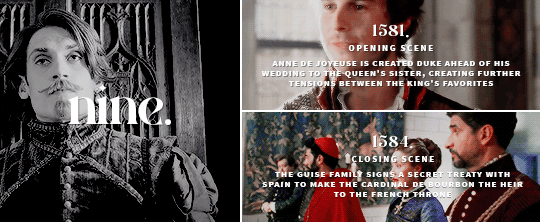


K I N G S I D E, a tale of seven kings
first season 1514-1520. Claude and François finally get married, a vacant seat for Mary Tudor, Louise of Savoy's stubborness to keep her son in check. A new King arises, the New Order, François' quest for glory in Italy. Another crown, another campaign.
second season 1522-1530. The inheritance dispute that leads Bourbon to treason. The pursuit of the italian dream, Claude dies, all is lost in Pavia. Süleyman and the unthinkable alliance, captivity in Spain. The Ottoman fleet. Royal depression. The inheritance dispute that led Bourbon to treason. The ladies' peace, Henry VIII flinching, a price for two princes, a New wife for the King.
third season 1531-1537. Louise dies, tensions between François and Marguerite. The wedding of Catherine and Henri. The rise of Pisseleu, the battle at Court between Charles and Henri and their people. War between Diane and Montmorency. Placards and the anti-heterics frenzy, another war in Italy. Wedding and death of Madeleine.
fourth season 1539-1547. Mending tensions between France and Spain. A very stubborn niece. All eyes on Henri and Catherine's sterile womb. Death of Charles. The duel in Jarnac. The King is dead, long live. Diane de Poitier's absolute triumph over Anne de Pisseleu. The Guises make their move.
fifth season 1553-1559. Diane of France's not so typical royal wedding. Catherine giving birth to the twins, Chenonceau goes to Diane, the cordial hate between the two. Rohan VS Nemours. Montmorency mess and a remarriage for Diane of France. The death of Henri, everything falls down.
sixth season 1560-1564. François II barely hanging on, Catherine's almost giving up, Elisabeth married off, the Guise family's counterpower, Montemorency's political exile, the Amboise conspiracy, preparations for the grand tour.
seventh season 1565-1572. The end of the grand tour, encounter between the royal family and Elisabeth, queen of Spain. The rise of Charles IX, a new queen, Marie Touchet and her bastard boys. Catherine's plans to get a match for Marguerite. Rising tensions between Charles and Henri after Jarnac and Montcontour. Marguerite's nuptials amidst tensions and Coligny's attempted murder.
eighth season 1572-1575. Coligny and the Protestant leaders rallying the troops. The Saint Barthelemew Massacre and the promise of Marguerite to never forgive her family. Catherine finds out Anjou's possible involvement. A new king for Poland. Marguerite's toubled married life. Death of Charles IX. Henri's escape from Poland and slow return to France.
nineth season 1581-1584. Catherine's illusions shatter. New King, no heir. Marguerite returns to Paris. Louise shows some spine against the King's favorites. Quarelling with Anjou, tensions with Elizabethan England, Anjou's election and subsequent death and Catherine's anger. The Guise family veering off the road.
tenth season 1585-1589. The mounting war of the three Henris. All eyes on King Henri who has no sons, Catherine's political exile, the slow burning of the last Valois children. Hunting down Marguerite from stronghold to stronghold, ending with her house arrest in Usson. Assassination of the Guise brothers, the death of Catherine, Henri III breaks down in Diane's arms. Marguerite in exile, Diane the only "true" daughter of Catherine's, as she sets out to (successfully) pacify the kingdom on her own.
#historyedit#perioddramaedit#mine#*#*kingside#16th century#so yeah this took me a whole month instead of a good week#we love crappy laptops
220 notes
·
View notes
Text

On 22nd March 1421, Franco-Scottish army. under the Earl of Buchan defeated English forces at Bauge in Anjou, France.
Not heard of it? That’s because the history we were taught in school was all anglicized, oh we did get a wee bit about the 100 year war, mainly Agincourt, because the English won that day, or possibly Crecy, another victory for them, Bauge and many other times the English were gubbed are ignored.
Ok you might be wondering why I say a Scottish army, historians all say that the majority of the troops were Scottish soldiers, aye there was a few Frenchmen fighting on “our” side, but this was very much a Scottish victory over an English army.
This all goes down as part of the Auld Alliance, which was signed in 1295 by King John Balliol and Philip IV of France. The Alliance was renewed periodically after that date and by the 1410s it was very much “in play” as Henry V of England initiated the third phase of the Hundred Years War, often known to historians as the Lancastrian War.
In 1418, it was the French Dauphin who called on his Scottish allies for assistance in his efforts to curtail Henry’s depredations after the great battle of Agincourt in 1415. It had to be the Dauphin, or Crown Prince, who sought help from Scotland because the French king, Charles VI, was already showing signs of the mental illness that would eventually see him nicknamed Charles the Mad.
The French aristocracy had split into two factions with many supporting the Duke of Burgundy in his aspirations to take the throne, while many others stayed loyal to the King and the House of Valois, known as the Armagnacs. Increasingly it was the teenaged Dauphin, the future Charles VII, who made all the major decisions for the Valois regime and, faced with the Burgundy alliance with Henry V and the surrender of many of his own forces, he sent for help from Scotland.
The complicating factor at the time was that King James I of Scotland was still a prisoner of the English, albeit that he was part of the royal household of Henry, whom he greatly admired, and he would actually fight with the English army against the French in France in 1420. In charge of Scotland was the Duke of Albany, Robert Stewart, who had become regent when James was first captured by the English in 1406 while en route to France.
There had been no large battles between the Scots and the English since the Battle of Homildon Hill, or Humbleton Hill, in 1402 won by the English, but with England preoccupied with France, Albany no doubt felt it safe to respond positively to Scotland’s oldest ally. By 1419, there was also peace of a sort along the border with England so the Scots could afford to send an army of around 6000 men including men at arms, spearman and archers to serve alongside the remaining French royal army.
Henry V’s of England’s brother, Thomas the Duke of Clarence led 10,000 men south towards the Loire. They set about besieging the castle at Bauge when the Scots were garrisoned, they made contact with them the day before Good Friday. A truce was reached, lasting until Monday, so that the combatants could properly observe the religious occasion of Easter.
The English lifted their siege and withdrew to nearby Beaufort, while the Scots camped at La Lude. However, early in the afternoon of Saturday Scottish scouts reported that the English had broken the truce and were advancing upon them hoping to take them by surprise. The Scots rallied hastily and battle was joined at a bridge which the Duke of Clarence, with banner unfurled for battle, sought to cross. A detachment of a few hundred men under Sir Robert Stewart of Ralston, reinforced by the retinue of Hugh Kennedy, held the bridge and prevented passage long enough for the Earl of Buchan to rally the rest of his army, whereupon they made a fighting retreat to the town where the English archers would be ineffective.
Both armies now joined in a bitter melee that lasted until nightfall. During this time Sir John Carmichael of Douglasdale broke his lance unhorsing the Duke of Clarence; since that day the Carmichael coat of arms displays an armoured hand holding aloft a broken lance in commemoration of the victory. Once on the ground, the Duke was killed by Sir Alexander Buchanan. The English dead included the Lord Roos, Sir John Grey and Gilbert de Umfraville, whose death directly led to the extinction of the male line of that illustrious family, well known to the Scots since the Wars of Independence. The Earl of Somerset and his brother were captured by Laurence Vernon (later elevated to the rank of knight for his conduct), the Earl of Huntingdon was captured by Sir John Sibbald, and Lord Fitz Walter was taken by Henry Cunningham.
On hearing of the Scottish victory, Pope Martin V passed comment by reiterating a common mediaeval saying, that the Scots are well-known as an antidote to the English.
42 notes
·
View notes
Photo

Battle of Crécy
The Battle of Crécy on 26 August 1346 CE saw an English army defeat a much larger French force in the first great battle of the Hundred Years' War (1337-1453 CE). Edward III of England (r. 1327-1377 CE) and his son Edward the Black Prince (1330-1376 CE) led their professional army to victory thanks to a good choice of terrain, troop discipline in the heat of battle, use of the devastating weapon the longbow, and the general incompetence of the French leadership under King Philip VI of France (r. 1328-1350 CE). Crécy would be followed up by an even more impressive victory at the Battle of Poitiers in 1356 CE as England got off to a flier in a conflict that would rumble on for 116 years.
Back on the medieval battlefield, in July 1347 CE, an English army captured Calais after a long siege. Meanwhile, David II of Scotland (r. 1329-1371 CE) and an ally of Philip VI, had invaded England in October 1346 CE. Durham was the target, but an English army defeated the Scots at the Battle of Neville's Cross on 17 October 1346 CE). King David was captured and Edward III now seemed unstoppable. A decade later, another great victory would come against the French at the Battle of Poitiers in September 1356 CE. This success was even more significant than Crécy because the king of France was captured.
After a period of peace from 1360 CE, the Hundred Years' War carried on as Charles V of France, aka Charles the Wise (r. 1364-1380 CE) proved much more capable than his predecessors and began to claw back the English territorial gains. By 1375 CE, the only lands left in France belonging to the English Crown were Calais and a thin slice of Gascony. During the reign of Richard II of England (r. 1377-1399 CE) there was largely peace between the two nations, but under Henry V of England (r. 1413-1422 CE), the wars flared up again and witnessed the great English victory at the Battle of Agincourt in October 1415 CE. Henry was so successful that he was even nominated as the heir to the French king Charles VI of France (r. 1380-1422 CE). Henry V died before he could take up that position, and the arrival of Joan of Arc (1412-1431 CE) in 1429 CE saw the beginning of a dramatic rise in French fortunes as King Charles VII of France (r. 1422-1461 CE) took the initiative. The weak rule of Henry VI of England (r. 1422-61 & 1470-71 CE) saw a final English defeat as they lost all French territories except Calais at the wars' end in 1453 CE.
Continue reading...
35 notes
·
View notes
Text
Trooping The Colour 2024
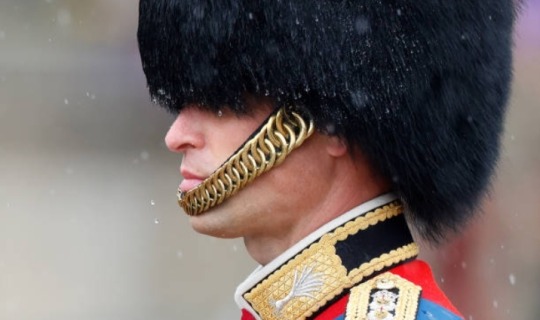





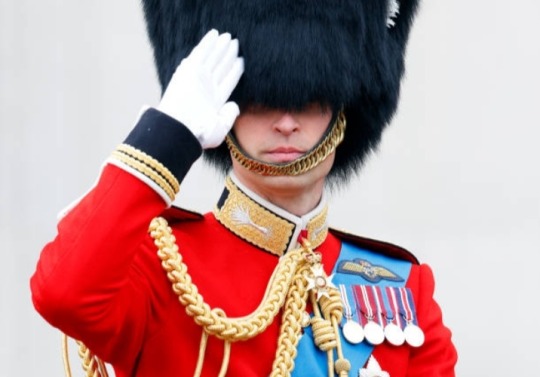
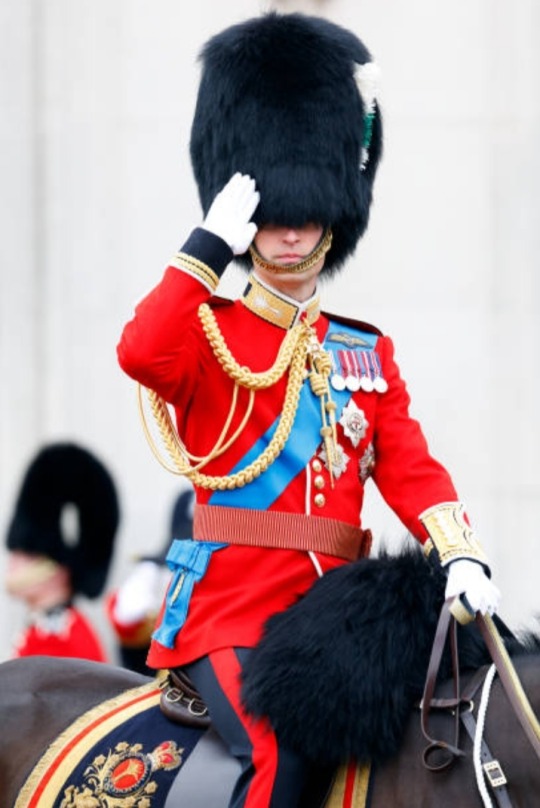

Prince William, Colonel of the Welsh Guards, rides down The Mall on horseback after attending Trooping the Colour on 15 June 2024 in London, England.
Trooping the Colour, also known as The King's Birthday Parade, is a military ceremony to mark the official birthday of the British Sovereign.
The ceremony takes place at Horse Guards Parade followed by a flypast over Buckingham Palace and was first performed in the mid-17th century during the reign of King Charles II.
The parade features all seven regiments of the Household Division with Number 9 Company, Irish Guards being the regiment this year having their Colour Trooped.
📸: Max Mumby / Indigo / Getty Images
#Prince William#Prince of Wales#British Royal Family#Trooping The Colour 2024#Trooping The Colour#Welsh Guards#King's Birthday Parade#Horse Guards Parade#Red Arrows#Buckingham Palace#Irish Guards#Household Division#Number 9 Company#King Charles II#King Charles III#flypast#horses#The Mall
67 notes
·
View notes
Text


Ophelia of Lausanne, Queen of Windenburg (1620-1673) - Part 7 - Warrior Queen & Arrest
In March of 1657, Ophelia returned to Glencraig with an army of 2,000 Brichesterian troops. Ophelia returned to Windenburg with her army while recruiting a further 700 troops along the way. Ophelia reunited with her husband after a year at Hertford Castle which they used as their residence for the next few months.
After several defeats including the Siege of Coventry and the Battle of Brandtridge, revolutionary forces were coming toward Windenburg. James sent his children and grandchildren to Ely where they were guaranteed safety and access to passage to Brichester. James remained in Windenburg where he was determined to face the Royalist forces. The Revolutionaries were able to win the Battle of Townsend, killing six hundred royalist soldiers. They besieged Havesham and Henford for the next two months, stealing ammunition from the Royalist forces.
Ophelia decided to make a desperate attempt at rallying forces in the Isle. Ophelia secretly traveled to the Isle in June of 1657. The Isle was heavily Jacoban and had always been staunch supporters of Queen Ophelia. The Isle were desperate to break away from the nobility and pledged their allegiance to Queen Ophelia after a meeting with the 70 Mayors of the Isle. Ophelia had raised an army of 5,000 Soldiers by July and sailed them across the sea to Witham which she ransacked. Ophelia, not knowing Windenburg would be under siege, took the advice of the Earl of Greenwood and instead sacked Wroxham. On August 8th, Windenburg fell to Royalist forces, however, King James escaped with a retinue of 200 men. James first traveled to Windslar and then rode for Devonshire. Upon hearing the news of the siege of Windenburg, Ophelia’s sons, Prince James and Prince Charles fled to Brichester with their wives and children. Ophelia’s younger children, Prince George and Princess Sophie were stranded in Blythe following a storm that raged for the next few days. After the storm, the Revolutionaries had blockaded the North Sea, preventing George and Sophie from leaving.
After Ophelia left Wroxham in 1657, as the city rose against the Royalist forces. Ophelia decided to abandon the city and use her troops to retake Courland and Central Windenburg. Ophelia initially won a few victories, recapturing the towns of Sheffield and Mayfield. Ophelia was a guest of the Earl of Cheshire during the Winter of 1657-1658 while staying at Brentwood House. Ophelia continued with her army following the harsh winter to reunite with her husband in Devonshire who had liberated the town of Woodville. Ophelia passionately reunited with her husband for the first time in over a year. While in Devonshire, Ophelia and her husband lodged at the University. Ophelia and her ladies-in-waiting, Cecelia and Pauline enjoyed their time at Devonshire which was heavily fortified. Ophelia felt safe in Devonshire, however, this would soon come to pass as within five months, Ophelia was forced to flee to Canterbury. While on their way to Canterbury in July of 1658, the Royal Entourage was attacked by a Revolutionary Army. The royal guards were slain and Ophelia and James were taken into custody.
#sims4#sims#legacy#royallegacy#royalty#ts4 royals#ts4#ts4 royal#ts4 legacy#sims 4 history#sims 4 historical#ts4 history#ts4 historical#sims 4 story#s4 story#ts4 story#ts4 baroque#sims 4 baroque#windenburghistory#royaltysimblr#royalty simblr
49 notes
·
View notes
Text
I'm bored so
All years referenced in Hamilton:
(directly from the songs)
1776, Aaron Burr, Sir
1780, Winter's Ball
1781, Yorktown (The World Turned Upside-Down)
1785, I Know Him
1789, What'd I Miss
1791, We Know
1800, The Election of 1800
(by event/lyric, assuming Alexander was born in 1757, in order of events. This might be a bit confusing so feel free to ask clarification)
1754, I was given my first command I led my men straight into a massacre
1766, when he was ten his father split
1768, his mother went quick
1768-1835, Philip Jeremiah Schuyler (Angelica's brother, son of Philip Schuyler. Philip had like 15 children apparently, including the sisters and Philip)
1769, the cousin committed suicide
1769, as a kid in the Caribbean I wished for a war ("I wish there was a war", letter to Edward Stevens)
1771, they placed him in charge of a trading charter
1772, a hurricane destroyed Hamilton's town
1772, ship is in the harbor now see if you can spot him
1773, I am Hercules Mulligan
1773, your tea which you hurl in the sea (Boston Tea Party)
1775, Farmer Refuted
1775, yo let's steal their cannons
1775, I was a captain under general Montgomery until he caught a bullet in the neck in Quebec
1776, British Admiral Howe's got 32000 troops in New York harbor
1776, he promotes Charles Lee makes him second-in-command
1777, I need someone like you to lighten the load (Alex becomes Washington's right hand man)
1777, I'm John Laurens in the place to be
1777, je m'apelle Lafayette
1778, Theodosia meets Burr
1778, Battle of Monmouth
1778, duel between Laurens and Lee
1779, Laurens i like you a lot (letter from Alex to John, "I wish, my dear Laurens, it might be in my power, by actions rather than words, to convince you that I love you")
1780, give it up for the maid of honor (Alexander and Eliza's wedding)
1781, Hamilton leaves Washington (due to his lack of command)
1781, we fought with him
1782, Philip's birth
1782, me I died for him
1783, Theodosia's birth
1785, I am sailing off to London
1787, at the constitutional convention, goes and proposes his own form of government
(October-August) 1787-1788, write a series of essays titled The Federalist Papers
1789, Hamilton runs the state department
1789-1792, life without the monarchy
1790, Cabinet Battle #1
1791, Burr becomes senator
1791, Hamilton meets Ms. Reynolds
1793, Cabinet Battle #2
1793, Thomas Jefferson resings
1797, Washington's presidency ends
1797-1801, Adams' administration
1797, The Reynolds Pamphlets
1799, George Washington's death
1800, the first murder trial of our brand new nation (Levi Weeks' trial)
(March) 1801, death of Peggy Schuyler
(July) 1801, George Eacker's 4th of July speech
(23th November) 1801, George and Philip's duel
(24th November) 1801, Philip's death
1804, Alexander Hamilton's death
1810, You're making me mad (King George III actually goes mad)
1820, I'll love you til my dying days (King George dies)
I tried my best to get most of the dates, but tell me if I missed any! :)
#hamilton#hamilton musical#I really want to do a “every part that's historically inaccurate in Hamilton and everything that's a direct quote”#For funsies
91 notes
·
View notes
Text
Some of the few remaining survivors of Auschwitz returned to the Nazi death camp on Monday, condemning a "huge rise" in anti-Semitism on the 80th anniversary of its liberation.
Auschwitz was the largest of the extermination camps built by Nazi Germany and has become a symbol of the Holocaust of six million European Jews. One million Jews and more than 100,000 non-Jews died at the site between 1940 and 1945.
"Eighty years after liberation, the world is again in crisis," warned Tova Friedman, 86, adding that "the rampant anti-Semitism that is spreading among the nations is shocking".
Along with Marian Turski, Janina Iwanska, and Leon Weintraub, Friedman was one of four former prisoners who spoke at the ceremony.
In total 50 fellow survivors gathered at the main commemoration outside the gates of Auschwitz II-Birkenau, joined by dozens of world leaders.
Earlier on Monday, elderly former inmates, some wearing scarves in the blue-and-white stripes of their death camp uniforms, laid flowers at the site, touching the camp's Wall of Death in silence.
"Today, and now, we see a huge rise in anti-Semitism and it is precisely anti-Semitism that led to the Holocaust," Turski, 98, warned those at the ceremony.
Weintraub, a 99-year-old Polish-born Swedish physician, asked for the young to "be sensitive" to intolerance and discrimination and condemned the proliferation of Nazi-inspired movements in Europe.
'Never be silent'
Also speaking at the ceremony, World Jewish Congress president Ronald Lauder said the horrors of Auschwitz and Hamas's attack on Israel on October 7, 2023 were both inspired by "the age-old hatred of Jews".
Anti-Semitism "had its willing supporters then, and it has them now," he said.
"On January 27, 1945 when the Red Army entered these gates, the world finally saw where the step-by-step progress of anti-Semitism leads. It leads right here."
"Today all of us must take a pledge to never be silent when it comes to anti-Semitism or for that matter any other hatred," Lauder said.
The streets of Oswiecim were mainly deserted except for police and fleets of official cars. The camp was closed to the public and largely silent except for the fluttering of the Auschwitz Museum flags.
Ukrainian President Volodymyr Zelensky, Britain's King Charles III and French President Emmanuel Macron and dozens of other international leaders attended the commemoration.
Organisers had however decided not to include political speeches to keep the focus on the survivors.
'Responsibility of remembrance'
In a statement, Zelensky said the world must unite "to prevent evil from winning".
Russia's President Vladimir Putin praised the role of Soviet soldiers in ending the "total evil" of Auschwitz.
Until its invasion of Ukraine in 2022, a Russian delegation had always attended the ceremony but Moscow was barred again this year.
Organisers said this could be the last major anniversary with such a large group of survivors.
"We all know that in 10 years it will not be possible to have a large group for the 90th anniversary," Auschwitz Museum spokesman Pawel Sawicki said.
"As the number of Holocaust survivors regrettably diminishes with the passage of time, the responsibility of remembrance rests far heavier on our shoulders and on those of generations yet unborn," King Charles said on a visit to Jewish community centre in Krakow on Monday.
Auschwitz was created in 1940 using barracks in Oswiecim, southern Poland. Its name was Germanised into Auschwitz by the Nazis.
The first 728 Polish political prisoners arrived on June 14 of that year.
On January 17, 1945, as Soviet troops advanced, the Nazi SS forced 60,000 emaciated prisoners to walk west in what became known as the "Death March".
From January 21-26, the Germans blew up the Birkenau gas chambers and crematoria and withdrew as Soviet troops approached.
On January 27, Soviet troops found 7,000 survivors when they arrived.
The day of its liberation has been designated by the United Nations as Holocaust Remembrance Day.
'Will they believe us?'
Ahead of the anniversary, survivors spoke to AFP about the need to preserve the memory of what happened in the death camp and warned of rising hatred and anti-Semitism. They also expressed fears that history could repeat itself.
Some 40 survivors in 15 countries told their stories, alone or surrounded by their children, grandchildren and great grandchildren -- proof of their victory over absolute evil.
Julia Wallach, who is nearly 100, cannot recall the events without crying.
"It is too difficult to talk about, too hard," she said. The Parisian was dragged off a lorry destined for the gas chamber in Birkenau at the last minute.
But hard as it is to relive the horrors, she insisted she would continue to bear witness.
"As long as I can do it, I will do it." Nearby, her granddaughter Frankie asked: "Will they believe us when we talk about this when she is not there?"
15 notes
·
View notes
Text
INTERVIEW
Peter Capaldi interview: 'Sexism in the TV industry is ridiculous'
The Doctor Who actor talks playing 'strange' characters, female Time Lords, and Jeremy Corbyn
5 November 2015
Johanna Thomas-Corr

Peter Capaldi is recovering from a Doctor Who injury. I initially assume when we meet at the Charlotte Street Hotel that his unlaced black Loake boots are a punkish subversion of the ones he wears on-screen but actually he’s seeking relief after key-hole surgery to his knee.
“The injury comes from running down corridors and swivelling round quickly,” he says with a lemon-sucking grimace. “When I first met Matt Smith he was on crutches from exactly the same problem.”
However, if ligament damage is the price he pays for being the 12th regeneration of the Doctor, he seems happy with it. Happy too with embracing the sort of advanced geekery that goes along with Doctor Who — such as paying a surprise visit to selfie-demanding Whovians queuing over night at Comic Con like some latter-day Henry V visiting his troops on the eve of battle.
No doubt there’ll be similar levels of fandemonium at the ExCel centre later this month when he takes to the stage at the three-day Doctor Who Festival. Such are the burdens of carrying the BBC’s crown jewels, a franchise that has been licensed to 189 countries (and wildly popular in the US) and is the most successful show in the BBC Worldwide portfolio.
Occasionally, of course, a fan will bring up his most famous pre-Tardis role as The Thick of It’s Malcolm Tucker. But as agonising as it may be for those (like me) who fell in love with him as master of the baroque expletive (“I’d love to stop and chat to you but I’d rather have Type 2 diabetes”) 57-year-old Capaldi is enjoying his role as the avuncular extraterrestrial too much to contemplate doing much else. Including dealing with the life admin that has accumulated since he took on full-time Timelording in 2013.
“I’m Doctor Who! I shouldn’t have to stand around in this queue,” he declares, with a teasing scowl. “Or wait in for a pair of shoes to be delivered. Or sort out the recycling, which I had to do yesterday. My family keep my feet on the ground but I don’t want my feet on the ground!”
"A lot of the people I play are excluded from the mainstream and I think that’s because of the way I look."
By family, he’s referring to his wife, Elaine Collins, an actress turned BBC TV producer, and their daughter Cecily, who recently graduated from university and is training in London to be a teacher. (He recently had to move them from his beloved Crouch End to Muswell Hill because his old house was so near a school that he was constantly spotted by junior Whovians.)
I ask him where he would go if he could time-travel back to any part of his life. “When you’re middle-aged, like I am, the past becomes more colourful,” he says, and yet despite the technicolour craziness of his current existence he eventually alights on the moment in 1983 when he first met Collins working for Paines Plough Theatre Company: “I just loved meeting my wife. We were both in a show together so that was terribly exciting. I’d like to re-live that.”

Time to change: Peter Capaldi with his Doctor Who co-star Jenna Coleman
It’s a sentimental confession from an actor who almost never plays a romantic role, usually portraying men burdened by power (King Charles I in the Devil’s Whore) or witty mavericks (such as Tucker or Randall Brown in stylish BBC series, The Hour.) In some quarters (ahem) he’s considered thinking woman’s totty — so why doesn’t he play more husbands or lovers?
“You’re looking at it,” he says, circling his gaunt features. “I like characters who are strange and on the edge. A lot of the people I play are excluded from the mainstream and I think that’s because of the way I look. But who wants to watch an everyman all the time? I’m not that bothered if I never do another scene in a kitchen.”
He recently won praise from female fans for insisting that it would be “creepy” to add any sexual element to his on-screen relationship with his much-younger sidekick, Clara, played by Jenna Coleman.
“It’s ridiculous that we get these old guys with young women draped round them. When I started Doctor Who and we were doing photoshoots we’d be asked if Jenna could just lie down there while I, you know” — he leaps up and acts out a young woman sprawled coquettishly about while he gets to stand and look powerful over her. “I had to say, ‘Look, that’s just not what we’re about. The relationship between my Doctor and his companion is one of deep love. But it’s a strange sort of platonic bond. It becomes clearer and more moving as this particular series goes on.”
Capaldi saves his most Tucker-esque sneer when discussing sexism in the industry. “Of course it’s sexist. Most of my peers have partners their age, so if we have a dinner party with a bunch of actors, the wives or partners are largely the same age. Then you see your friends on screen and they are suddenly with some extraordinary young lady who wouldn’t be at the dinner party. It’s ridiculous.
“It is true that women reach a certain age when people decide that they’re not useful anymore as actors. There are a few significant theatrical roles that they might be viable for. That’s not fair, it’s not right, it’s not a proper reflection of what goes on in life.”
He says he’s not averse to a male sidekick once Coleman bows out in December — and he doesn’t rule out a female doctor with a male sidekick in the future — but “it depends on who plays them”. Capaldi isn’t keen on speculating on his possible replacement because as far as he’s concerned, there’s no vacancy.
He rules out any return for The Thick of It — even if he agrees that the current state of politics is ripe for satire. “I don’t know where my character would fit into it. Politics is so much about the now that I’m not sure there’s an avenue for Malcolm to reappear. And I wouldn’t want to revisit him unless he was central to the endeavour.”
Surely a series set among Jeremy Corbyn’s opposition would be fun? He remarks that the Labour leader himself would be “an amazing character to play”. Is he a Corbynite, then? He refuses to reveal his politics but as someone drawn to outsiders he’s found Corbyn’s emergence “absolutely thrilling”.
"Even on your break, everything is Doctor Who-related. Artistically, I hunger for something that is different."
“I love the way the political orthodoxy is being challenged. It seems to be becoming — rightfully so — the spirit of the times. It feels vital and compelling. There’s a range of professional politicians and opinion makers who say certain things in politics can’t happen. And then these things happen because people want them to. That’s a wonderful thing.”
He admits craving roles beyond Doctor Who. “Even on your break, everything is Doctor Who-related. Artistically, I hunger for something that is different.”
He reminisces about the bohemian London that still existed when he first arrived in the early Eighties, when Soho was a “swamp” and he would spend his days hanging around there smoking Gauloises and hoping to meet John Hurt or acting with Daniel Day-Lewis in Dracula. The pair would be taken in and fed by the mothers of the working-class girls who sold tickets for their play at the box office.
“I loved being in touch with all of that part of London life. You get distanced from that as you become successful. I’ve never felt drawn to Mayfair.”
He has a particular yearning to play an artist. “I’m interested in Francis Bacon and how he came to be. And Lucian Freud was very interesting.”
He fancies being involved in a TV show that subverts the crime genre: “I love that idea of taking a standard police show and giving it a philosophical or supernatural timbre.” Although he would consider a Shakespeare stage role, he fears coming across as the “dunce at the back of the class” as he’s never had any classical training. “I have given up trying to make things happen. If people want me in the movies, that’d be lovely.”
After the Sony hack revealed discussions over a Doctor Who feature film, it’s entirely possible — but there are no firm plans as yet. He wants to squeeze as much pleasure out of the role before the franchise sheds its scales (as it always does) and looks towards a 13th Time Lord.
Capaldi recalls that a few nights earlier, on Halloween, young trick-or-treaters who came to his house were spooked when Doctor Who greeted them. “In a few years’ time, once I’ve left the show, I’ll miss it so much I’ll be coming to the door in my costume.”
22 notes
·
View notes
Text




Happy 11th birthday to Prince George of Wales!
Born on 22 July 2013, George Alexander Louis is the eldest child of William, Prince of Wales and Catherine, Princess of Wales, the eldest grandchild of King Charles Ill and second in the line of succession to the British throne behind his father.
George was christened on 23 October by Justin Welby, Archbishop of Canterbury, in the Chapel Royal at St James's Palace. Prince George spent his first months at his parents' cottage on the grounds of Bodorgan Hall in Anglesey, Wales, before his family relocated to Kensington Palace in 2014.
He embarked on his first royal tour with his parents in April 2014, during which the Cambridges spent three weeks in New Zealand and Australia. In June 2015, George made his first public appearance on the balcony of Buckingham Palace following the Trooping the Colour parade. From 2015 to 2017, the family lived at Anmer Hall in Norfolk, where George started his education at the West Acre Montessori School Nursery in January 2016.
George started primary school under the name George Cambridge in September 2017 at the Thomas's School in Battersea. In 2022, the family moved to Adelaide Cottage in Windsor Home Park. Since September 2022, George and his siblings, Charlotte and Louis, have attended Lambrook, in Berkshire.
37 notes
·
View notes
Text

Aimee’s 2023 royal family engagement count: The final results!
Disclaimer; everyone’s counts will be different, people have different rules to their method of counting the Court Circular. It isn’t a definitive count and is done just for fun 💗
The court circular doesn’t record any work behind the scenes, only public engagements, official meetings and luncheons/dinners. It’s more a gauge of their public facing roles.
👑 Princess Anne 👑
Once again Princess Anne tops the chart as the hardest working royal, completing 467 engagements.
She has done 393 engagements in the UK.
She travelled to 10 different countries this year and did 74 engagements there. 🇨🇾🇪🇪🇳🇿🇦🇺🇫🇷🇨🇦🇩🇪🇯🇪🇮🇳🇬🇮
Dubbed by some as the unofficial Queen of Scots she did 62 in Scotland.
King Charles III
In the first year of his reign King Charles did a grand total of 463 engagements
In the UK he did 386 engagements.
He travelled to 5 different countries where he completed 76 engagements and did 3 full royal tours in Germany, France and Kenya. He also hosted a state visit for South Korea at Buckingham Palace. 🇩🇪🇷🇴🇫🇷🇰🇪🇦🇪
What is also worth mentioning is that he has Red Boxes that he has to go through every single day, except Christmas Day and Easter Sunday as well as a lot of work behind the scenes.
Prince Edward, The Duke of Edinburgh
This year, on his 59th birthday, Prince Edward became the Duke of Edinburgh, taking the title of his father. With this he increased his work with the Duke of Edinburgh award and travelling to visit international sections of the award. Prince Edward also visited a lot of theatre related organisations and youth centres and charities.
He completed 294 this year and visited 13 countries on solo tours and with his wife. 🇹🇨🇧🇸🇺🇸🇨🇦🇩🇪🇨🇿🇮🇪🇹🇷🇧🇭🇸🇬🇳🇿🇦🇺🇮🇩
Sophie, The Duchess of Edinburgh
In 2023 Sophie carried on her hard work in areas like women’s rights in disadvantaged areas, avoidable blindness, hygiene and agriculture.
She completed 226 this year in the UK and the commonwealth and visited 10 countries on solo tours and with her husband. 🇳🇱🇹🇨🇧🇸🇮🇶🇮🇹🇪🇹🇨🇦🇨🇴🇨🇭
Prince Richard, The Duke of Gloucester
The Duke of Gloucester has this year completed 208 engagements in the UK.
He continued his long lasting work in heritage, architecture, the St John’s Ambulance and military organisations.
Hopefully next year we will see him do some overseas engagements. 🕯️
Queen Camilla
In the year of her Coronation, Queen Camilla carried out 198 engagements.
She visited Germany, France and Kenya where she did 42 engagements whilst on official tours. 🇩🇪🇫🇷🇰🇪
She focused a lot of her engagements this year on sectors close to her heart like women’s & children’s charities, osteoporosis care and animal welfare.
Prince William, The Prince of Wales
The Prince of Wales this year carried out engagements in the UK and the Commonwealth in areas like mental health, homelessness and conservation. In 2023 he did 183 engagements.
Prince William travelled to 4 countries where he did 32 engagements related to Earthshot in USA and Singapore, visiting Ukrainian troops in Poland, attending the Jordanian royal wedding in June and finally travelling to Kuwait to give his condolences to to The Emir of Kuwait following the death of The Emir Nawaf Al-Ahmad Al-Jaber Al-Sabah. 🇵🇱🇺🇸🇯🇴🇸🇬🇰🇼
Catherine, The Princess of Wales
The Princess of Wales carried out 134 engagements throughout 2023. Catherine continued her work in her Early Years foundation and childhood development.
She visited France for two, one off engagements for the rugby World Cup in France and to Jordan for Crown Prince Hussein and Princess Rajwa’s wedding in June. 🇫🇷🇯🇴
Hopefully we will see her and the Prince of Wales go on a couple of overseas tours next year now that their children are older.
Birgitte, The Duchess of Gloucester
The Duchess of Gloucester has this year completed 127 engagements in the UK. She continued her long lasting work in sports, the arts (Opera, Ballet, Acting etc…) and accompanying her husband to official engagements.
Vice Admiral Sir Tim Laurence
Although not an official working royal, Sir Tim often attends as a great support to his wife’s engagements as well as having his own non-royal patronages and interests. It was recently announced that he would become chair of the Science Museum group and is the patron of a number of heritage organisations.
He accompanied his wife to a total of 92, represented her 4 times and accompanied her to 27 engagements abroad in 5 countries. 🇪🇪🇳🇿🇦🇺🇫🇷🇬🇮
(Operation working royal Tim) 👏
Prince Edward, The Duke of Kent.
Despite being 88, Prince Edward, the late Queens cousin, has carried out 75 engagements even with his ailing mobility.
He continued his valued hard work with organisations like the RNLI, the Royal Scots Guards and the Commonwealth War Graves Commission, which he recently passed on the presidency to the Princess Royal.
Princess Alexandra of Kent
Although she is practically retired now, we have seen Princess Alexandra attend four official engagements in 2023. Firstly she attended a Reception for British East and South-East Asian Communities, secondly to present medals to members of The Royal Lancers, thirdly she attended the Coronation of King Charles and Queen Camilla and lastly she visited the Royal Chelsea Flower Show.
This year the British Royal Family completed a grand total of 2476 in the UK and 29 different countries across the world.
🇨🇾🇪🇪🇳🇿🇦🇺🇫🇷🇨🇦🇩🇪🇯🇪🇮🇳🇬🇮🇷🇴🇰🇪🇵🇱🇺🇸🇯🇴🇸🇬🇹🇨🇧🇸🇨🇿🇹🇷🇧🇭🇸🇬🇮🇩🇳🇱🇮🇶🇮🇹🇪🇹🇨🇴🇨🇭🇰🇼
See below for engagements from the past decade and the types of engagements carried out in 2023


#thank you for following me on this journey#i might carry on in 2024#time will tell#king charles iii#queen camilla#william prince of wales#catherine princess of wales#prince edward duke of edinburgh#sophie duchess of edinburgh#princess anne#princess royal#tim laurence#timothy laurence#prince richard duke of gloucester#birgitte duchess of gloucester#prince edward duke of kent#princess alexandra of kent#2023 engagement count
76 notes
·
View notes
Text

It's simply amazing the amount of excuses people will make for Will and Kate.
Take this example:

Why does anyone take William's comments about learning Welsh seriously?
If he wanted an actual tutor, he could have asked his father for one back when he actually lived in Wales. He could have asked one after he and Kate moved out of Wales. He could have hired one in the past two years but clearly hasn't and isn't going to.
He's just going to keep on saying that he's working on "learning" Welsh, and yet--AND YET--appears no closer now than he was a year ago. He's going to keep on with the same explanation--he's busy, he's using an app like Duolingo, etc.--because he does not care about learning Welsh and is just going to lie about it, from his past statements to the day he dies.


It never ceases to amaze me that none of The Will & Kate Cult, such as yourself @cr19x, has a good explanation for the public self immolation Will & Kate have conducted this year.
You don't have a good explanation for why Kate received The Order of the Companions of Honour in April, which was basically a royal diss by King Charles.
You don't have a good explanation of why Sophie was wearing The Lotus Flower tiara in June and will likely wear a different (new to her) tiara later on in the future, whether it's this year or next.
You don't have a good explanation for why Will & Kate were unexpectedly showing up in Balmoral last weekend for face-to-face meetings with King Charles.
You don't have any explanation for why William's new equerry is only supporting William, and why Will & Kate look set to have separate finance managers.

I post comments that I think are valid, regardless of which side of the stan aisle they fall on.
But that said, let's take a look at some responses to Sky News' tweet about Kate attending the ballet this afternoon.








The first tweet up there is spot on. If Kate isn't going to work, then why isn't she posting comments like this on her personal account? She does not have any patronages supporting any ballet companies.
Of course, the real answer is that Kate has engineered her future as a public recluse. She is only going to come out in public officially FOUR TIMES A YEAR--Trooping the Colour, Wimbledon, Cenotaph/Remembrance Sunday, and Christmas concert.
And there isn't going to be a tiara engagement in her future. For a long, long time.
And you, @cr19x, don't seem to grasp why that is or why Kate deems that necessary for her long-term mental health.
“A doughnut hole in the doughnut’s hole. But we must look a little closer. And when we do, we see that the doughnut hole has a hole in its center. It is not a doughnut hole at all, but a smaller doughnut with its own hole, and our doughnut is not whole at all!”

#my gif#hate mail#The Workshy Waleses#Workshy Will#wales#William The Terrible#William The Weak#William The Prince of OWN GOALS#prince william#William The Prince of Wales#Will & Kate's Covert Separation#“Celebrity” Catherine Middleton#kate middleton#Catherine The Princess of Wales#Prince & Princess OWN GOALS#cancer schmancer#Wales fans are CHUMPS#Wales Wailers#crazy cambridge stans#The Will & Kate Cult#Wales fandom ARMAGEDDON#Wales kid number FOUR#princess basement baby#twitter#royal patronages#DEMOTED to the Order of the Companions of Honour
19 notes
·
View notes
Photo

Battle of Crécy
The Battle of Crécy on 26 August 1346 CE saw an English army defeat a much larger French force in the first great battle of the Hundred Years' War (1337-1453 CE). Edward III of England (r. 1327-1377 CE) and his son Edward the Black Prince (1330-1376 CE) led their professional army to victory thanks to a good choice of terrain, troop discipline in the heat of battle, use of the devastating weapon the longbow, and the general incompetence of the French leadership under King Philip VI of France (r. 1328-1350 CE). Crécy would be followed up by an even more impressive victory at the Battle of Poitiers in 1356 CE as England got off to a flier in a conflict that would rumble on for 116 years.
Back on the medieval battlefield, in July 1347 CE, an English army captured Calais after a long siege. Meanwhile, David II of Scotland (r. 1329-1371 CE) and an ally of Philip VI, had invaded England in October 1346 CE. Durham was the target, but an English army defeated the Scots at the Battle of Neville's Cross on 17 October 1346 CE). King David was captured and Edward III now seemed unstoppable. A decade later, another great victory would come against the French at the Battle of Poitiers in September 1356 CE. This success was even more significant than Crécy because the king of France was captured.
After a period of peace from 1360 CE, the Hundred Years' War carried on as Charles V of France, aka Charles the Wise (r. 1364-1380 CE) proved much more capable than his predecessors and began to claw back the English territorial gains. By 1375 CE, the only lands left in France belonging to the English Crown were Calais and a thin slice of Gascony. During the reign of Richard II of England (r. 1377-1399 CE) there was largely peace between the two nations, but under Henry V of England (r. 1413-1422 CE), the wars flared up again and witnessed the great English victory at the Battle of Agincourt in October 1415 CE. Henry was so successful that he was even nominated as the heir to the French king Charles VI of France (r. 1380-1422 CE). Henry V died before he could take up that position, and the arrival of Joan of Arc (1412-1431 CE) in 1429 CE saw the beginning of a dramatic rise in French fortunes as King Charles VII of France (r. 1422-1461 CE) took the initiative. The weak rule of Henry VI of England (r. 1422-61 & 1470-71 CE) saw a final English defeat as they lost all French territories except Calais at the wars' end in 1453 CE.
Continue reading...
25 notes
·
View notes
Text
Happy 199th birthday to Empress Eugénie de Montijo of the French, The last woman to be head of state of France. May 5, 1826-Jul 11, 1920


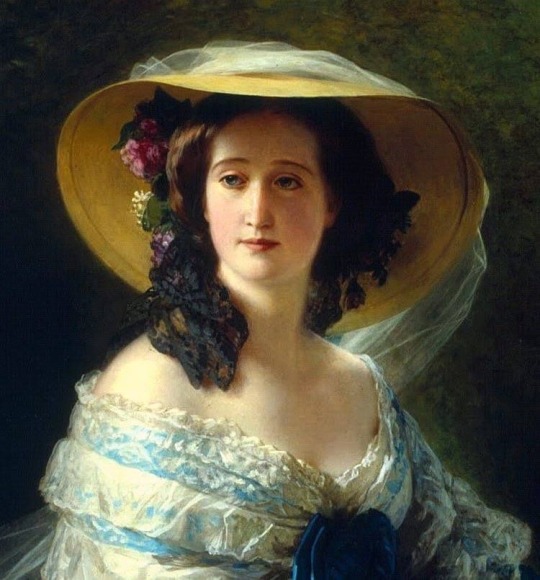

Born in Granada on May 5, 1826, Her father, Don Cipriano, was a fervent admirer of Napoleon: he supported the reign of Joseph Bonaparte, who had been placed on the Spanish throne by his brother Napoleon. This earned Don Cipriano some enemies when the French Empire collapsed, including the new King of Spain, Ferdinand VII. And so, as soon as it had the necessary funds, Eugenie’s family, which loved all things French and had admired Napoleon, moved to France in 1835.
From youth Eugénie embraced Bonapartism and developed a strong interest in politics , under the influence of Eleanore Gordon, ironically a then former mistress of Louis Napoléon.
Eugénie first met Prince Louis Napoléon—then President of the Second Republic—at a reception at the Élysée Palace on April 12, 1849, alongside her mother. During their encounter, he famously asked her, “What is the road to your heart?” to which she cleverly replied, “Through the chapel, Sire.”
After becoming Emperor, Napoleon III publicly announced their engagement in a speech on January 22, 1853, saying he had chosen a woman he loved and respected over one selected purely for political gain. The couple married on January 29 in a civil ceremony at the Tuileries, followed by a grand religious wedding at Notre Dame the next day.
Napoleon III, who declared her “an ornament of the throne.” As Empress of the French, she embodied the virtues of Josephine—grace, piety, and strength—and used her position not merely for show, but as a platform for action
As Empress she championed charitable causes, she gave a new lease of life to the Société maternelle (Maternal Society), a charitable institution created by Marie-Antoinette; she visited cholera patients during the epidemics of 1865 and 1866; and she was concerned about the fate of children held in prison. She supported education for girls,—backing sculptor Camille Claudel, supporting George Sand’s nomination to the Académie française, and helping Julie Victoire Daubié become the first woman to sit for the Baccalauréat. She sometimes even took a stand in defence of controversial artists, for example in the 1857 censorship case of Charles Baudelaire’s collection of poems “Les Fleurs du mal” (The Flowers of Evil), though in vain.
She formed a close friendship with Queen Victoria to which she maintained an extensive correspondence setting out her husband’s positions in her letters.
After the fall of the Second Empire in 1870 She followed her husband and son into exile in England.
After her husband’s death, she dedicated herself to their only son, the Prince Imperial. After he had finished his studies, Eugenie sent him off on a tour of Europe to defend his right to the throne … But the Prince Imperial thought his legitimacy had to be won through military glory: despite the pleas of his mother he joined the British troops who were going to South Africa. He died tragically in South Africa in 1879, a loss from which Eugénie never recovered. She later built an abbey at Farnborough as a resting place for him and Napoleon III.
Eugénie lived quietly in exile and died in Madrid in 1920 at age 94
#Eugénie de Montijo#L’Impératrice#La Reine du Second Empire#favorite empress#second french empire#napoleon iii#napoleon#art#history#Bonapartist#napoleonic era
10 notes
·
View notes
Text
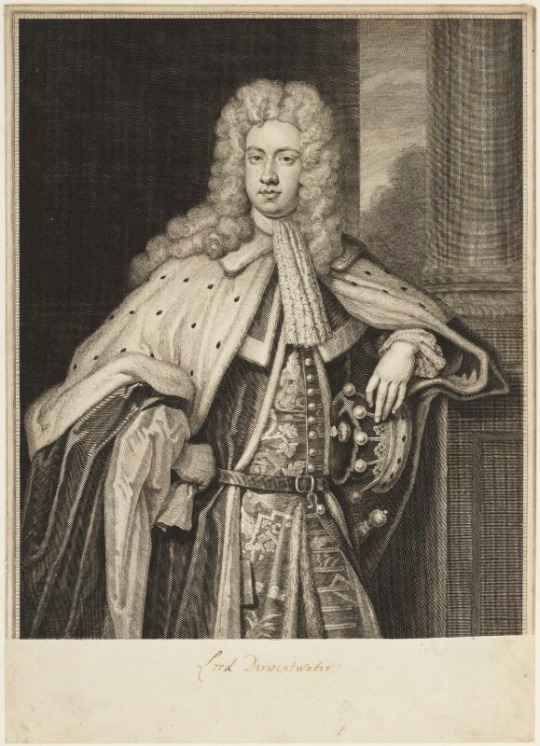


On 7th February 1716, the Jacobite army disbanded at Aberdeen, ending the 1715 uprising.
James Francis Edward Stuart had fled to France with many leading Jacobites three days earlier and it would be almost thirty years before his son Charles would try to claim the throne.
When Queen Anne, the subject of yesterdays post, died on August 1st, 1714, inadvertently fulfilling her ancestor James V’s prophecy about the House of Stuart – “it cam wi’ a lass, it’ll gang wi’ a lass.” The Stuarts had ruled over Scotland and then the United Kingdom since 1371, and the end of the dynasty was viewed by many Scots as a tragedy.
Her successor George I, Elector of Hanover, arrived in London seven weeks later to claim his throne, but there was already considerable resentment against him because Scotland were imposed with the Hanoverian succession – there would be no separate crowning at Scone for this King of Scots.
Yes there had been another uprising a few years before, but historians all agree that the ‘15 was the best opportunity to put their monarch of choice back on the throne.
James’s cause in the west of the highlands proved unattractive at first, but Aberdeen, Dundee and Inverness fell to Mar without a shot, the only major stronghold north of the Tay that was still in Hanoverian government hands was Fort William.
Perth was captured in late September but a lighting raid on Edinburgh Castle by a small detachment of Jacobites failed – reportedly there were enough arms and cash deposits in the Castle to equip half an army.As it was, Mar now had thousands of troops under his command and James Stuart, who had no prior knowledge of the rising, made him his commander – but where was the ‘king’ himself? James was agitating with the French government to give him men and ships to no avail, but in Scotland and England, the rising was already well under way.
Against Mar stood only the troops under the Duke of Argyll’s command, and they were surely too few in number to stand against the Jacobites, even though reinforcements came from the Hanoverian garrison in Ireland.The Jacobite lords of Northumberland had risen, and were supposed to meet up with a force heading south through the west coast of England. This consisted of English Jacobites and a force from the Scottish Borders and at first they, too, swept aside all resistance.
However their ambitions were thwarted following their failings at the Battle of Sheriffmuir, and Bobbin John’s inadequacies as a leader in not pressing home the advantage, The Earl of Mar, to give him his real name, was by nature a ditherer, inexperienced in command and reluctant to advance without having an overwhelming force.
Argyll’s army was outnumbered two to one but he had experienced and battle-hardened troops under him, as well as a superior cavalry force. Mar’s Jacobites were inexperienced in mass pitched battles, and their commander was no strategist.
The tale of the Battle of Sheriffmuir on November 13, 1715, is simple – both right wings smashed through their opponents, the clans’ highland charge sending the government army into flight.
Crucially, they lost discipline and chased after the fleeing force and without those troops, Mar decided to hold his ground because Argyll’s right wing had beaten the Jacobite army’s left wing, albeit with heavy losses.
Mar may not have known that Argyll was down to around 1000 effective troops and that victory was his for the taking. Whatever the reason, Mar did not press home any further attack and though he claimed victory because there were slightly more dead Hanoverian soldiers than Jacobites, the strategic advantage had been lost and the Rising in Scotland had effectively been halted.
At the same time in England the Jacobites were beaten at Preston, ending their part in the Uprising.
It was over a month before James Stuart arrived in Scotland on a single ship with no soldiers and no clear idea what he wanted to do. Argyll sat waiting for reinforcements, while many of Mar’s troops went home to bed down for the winter.
The Jacobite King was devoid of command skills and charisma, and was also sick, which forced him to cancel a planned coronation at Scone and return to France, where he had been living under the protection of King Louis XIV of France, he never set foot in Scotland again, and it would be up to his as of then unborn son to try nearly 30 years later.
You can find more snippets of both the ‘15 and ‘45 Uprisings around Aberdeen here https://www.aberdeencity.gov.uk/sites/default/files/2020-09/Jacobite%20Trail.pdf
11 notes
·
View notes
Photo

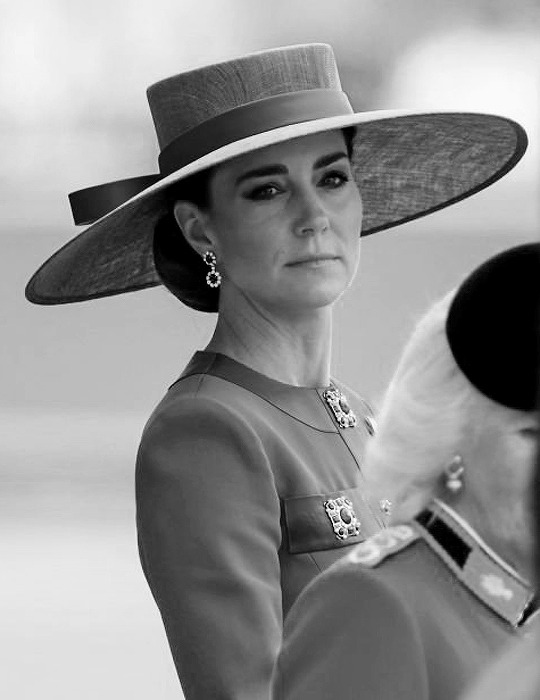
The Princess of Wales during the Trooping the Colour ceremony at Horse Guards Parade, central London, as King Charles III celebrates his first official birthday since becoming sovereign. | June 17, 2023
217 notes
·
View notes